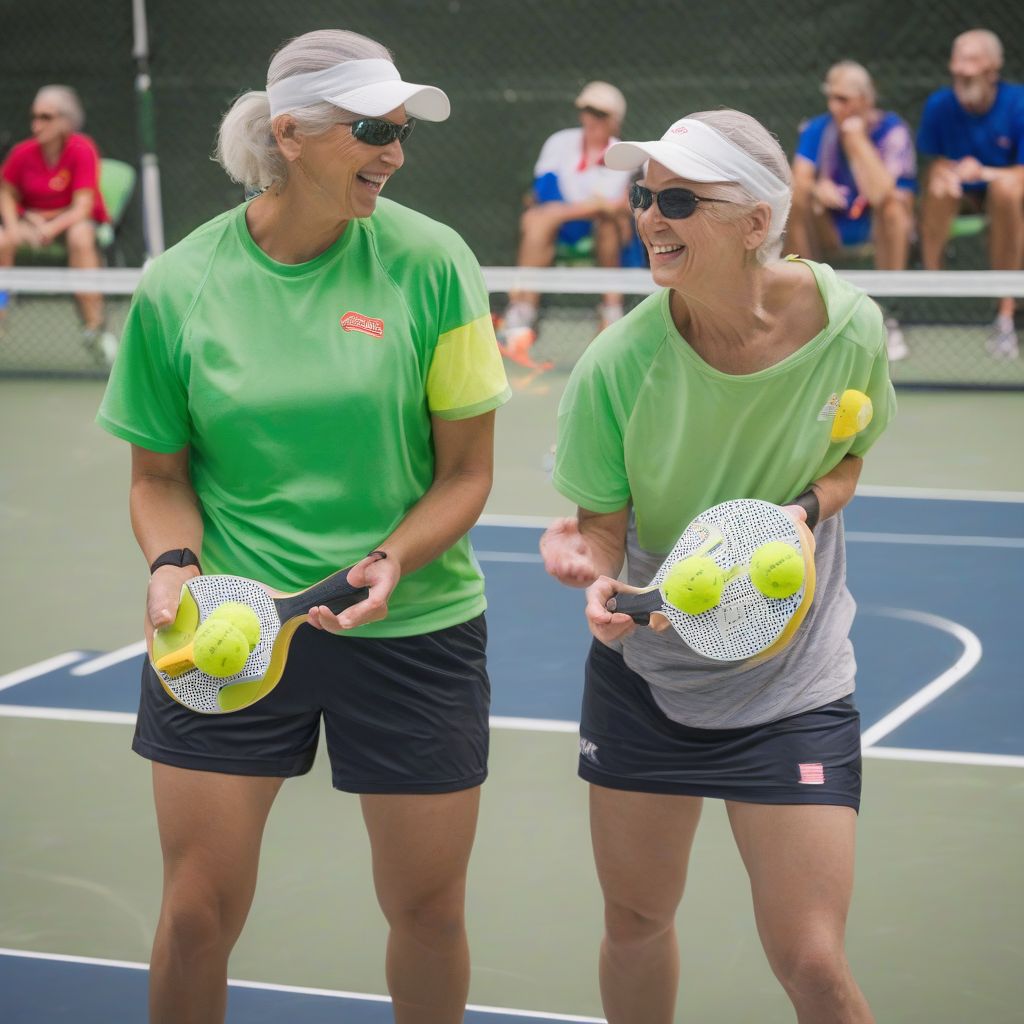Imagine this: You’re on the pickleball court, the adrenaline pumping, the score tied. Your opponents hit a shot that seems impossible to return. But wait – your partner calls out “Got it!” with unwavering confidence, moving smoothly into position. You trust their judgment, hold back, and watch as they execute a stunning return, securing the point. This, my friends, is the power of communication in advanced pickleball doubles. It’s more than just words; it’s the unspoken language of partners working in perfect sync, anticipating each other’s moves, and achieving victory together.
Why Communication is Your Secret Weapon
In the world of competitive pickleball, especially at the advanced level, communication is not just an advantage – it’s essential. Here’s why:
1. Eliminate Confusion, Create Harmony
Pickleball is a fast-paced game. Split-second decisions are the norm. Clear and concise communication between partners eliminates confusion about who’s covering which area of the court. This shared understanding translates into smoother transitions, fewer collisions, and a united front against your opponents.
2. Turn Defense into Offense
Effective communication transforms your defensive strategy. By calling out shot directions (“Crosscourt!” or “Down the line!”) and alerting your partner about potential poaching opportunities (“I’m going!”), you gain a crucial edge. This allows for quicker reactions, better positioning, and the ability to turn defense into offensive opportunities.
3. Unleash the Power of Non-Verbal Cues
While verbal communication is vital, don’t underestimate the power of non-verbal cues. A simple nod, a pointed finger, or even eye contact can convey volumes in the heat of the moment. These subtle signals enhance coordination and foster a deeper understanding between partners, leading to a more intuitive and effective game.
 Pickleball Doubles Communication
Pickleball Doubles Communication
Mastering the Art of Pickleball Dialogue
Now that we understand the significance of communication, let’s explore how to integrate it effectively into your game:
1. Pre-Match Huddle: Establish Your Game Plan
Before you step onto the court, have a mini-strategy session with your partner. Discuss:
- Calling Shots: Decide who’ll call “in” or “out” on shots landing near the baseline.
- Movement Patterns: Establish your preferred formation (e.g., both up or one up, one back) and how you’ll cover the court.
- Signals: Agree on non-verbal cues for common situations like poaching or switching positions.
2. During the Game: Loud, Clear, and Concise
- Call Your Shots: Loudly announce whether you’re hitting “Forehand” or “Backhand.” This helps your partner anticipate your shot direction and adjust their positioning.
- Poaching Alerts: If you see an opportunity to poach (intercept a shot in your partner’s area), call out “I’m going!” or “Yours!” to avoid confusion.
- Encouragement is Key: Maintain positive energy by offering words of encouragement, even after a missed shot. A simple “Good try!” or “We got this!” can boost morale and keep the momentum going.
3. Post-Point Analysis: Learn and Improve Together
After each point, take a moment to analyze the play with your partner. Did a lack of communication lead to a missed opportunity? Could a different call have resulted in a better outcome? Use these post-point discussions as learning experiences to refine your strategies and strengthen your communication for the next rally.
Beyond Words: Building a Powerful Partnership
Effective communication in pickleball extends beyond spoken words. It’s about:
- Trust: Believe in your partner’s abilities and trust their judgment on the court.
- Respect: Value their input and be open to feedback, even during the heat of competition.
- Adaptability: Be willing to adjust your communication style based on your partner’s preferences and the flow of the game.
By fostering these qualities, you’ll build a formidable partnership where communication flows naturally, leading to a more enjoyable and successful pickleball journey.
The Final Serve
Communication is the invisible thread that binds a successful pickleball doubles team. It’s the difference between missed opportunities and triumphant victories. By mastering the art of pickleball dialogue – both verbal and non-verbal – you unlock a new level of gameplay, turning you and your partner into a force to be reckoned with on the court. So, get out there, communicate clearly, and let your teamwork shine!
What are your experiences with communication in pickleball doubles? Share your thoughts and strategies in the comments below! And don’t forget to share this article with your pickleball buddies – let’s spread the word about the power of communication!
- Bond, Payton (Author)
- English (Publication Language)
- Baker, Joe (Author)
- English (Publication Language)
- Hall, Dennis (Author)
- English (Publication Language)
- Biff, Jaden (Author)
- English (Publication Language)
- Leach, Gale (Author)
- English (Publication Language)
- Callahan, John (Author)
- English (Publication Language)
- Carnot, Prem (Author)
- English (Publication Language)
- Moore, Daniel (Author)
- English (Publication Language)
- Jilson, Ben (Author)
- English (Publication Language)
- Hill, Cade (Author)
- English (Publication Language)








![Pickleball for Beginners: Level Up Your Game with 7 Secret Techniques to Outplay Friends and Ace the Court [III EDITION]](https://m.media-amazon.com/images/I/51la8IS6C4L._SL160_.jpg)

